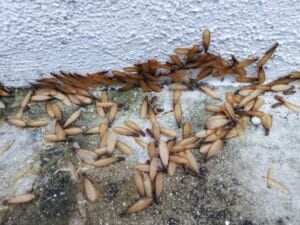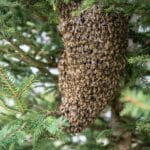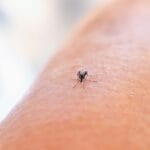Key Takeaways
- Regular home inspections are crucial for early termite detection and prevention.
- Termites leave distinct signs of their presence, such as mud tubes and wood damage.
- Landscape management and construction materials can significantly deter termite infestations.
- Professional termite treatments offer thorough and long-lasting protection.
- Ongoing maintenance and vigilance are key to keeping your home termite-free.
Defend Your Domain: Home Termite Prevention Simplified
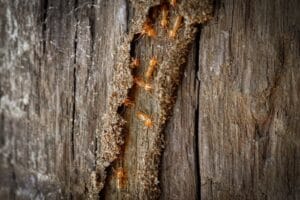
Let’s face it, termites are a homeowner’s nightmare. But with the right knowledge and tools, you can turn your home into a fortress that’s less appealing to these wood-munching invaders. Prevention is always better than cure, so let’s dive into how you can protect your beloved home from termites.
Quick Facts on Termites
Before we get into the nitty-gritty of termite prevention, it’s important to understand our adversary. Termites are social insects, working together in large colonies. They primarily feed on wood, but they can also damage paper, books, insulation, and even swimming pool liners and filtration systems. Their stealthy work can go undetected for a long time, causing extensive and costly damage. Therefore, the first line of defense is to stop them from setting up shop in your home.
Initial Steps to Safeguard Your Home
Start by inspecting your environment. Check for signs of termites, such as wood damage or mud tubes, in and around your home. These inspections should not be a one-time event; they need to become a part of your regular home maintenance routine. Remember, early detection is key to preventing a full-blown infestation.
Spotting the Enemy: Signs of Termite Infestation
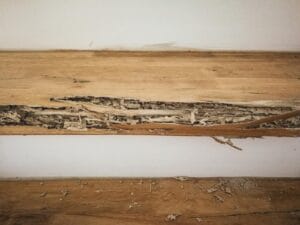
Knowing what to look for can save you a lot of time and money. Here are the telltale signs that termites might be staging a takeover:
Unmistakable Signals of Termite Presence
Termites are not always visible to the naked eye, but they leave behind some clear indicators of their presence. Look out for:
- Mud Tubes: These pencil-sized tunnels are a highway for termites and a sure sign of infestation.
- Wood Damage: Tap on wood structures in your home. If it sounds hollow, termites might be eating it from the inside out.
- Discarded Wings: After termites swarm to start new colonies, they shed their wings. Finding piles of these can indicate an active or previous infestation.
The Less Obvious Clues
Besides the obvious signs, there are subtler hints that could point to a termite problem:
- Unexplained cracks on internal walls, ceiling beams, or rafters can sometimes be caused by termite activity.
- Doors and windows that stick or are hard to open might be a result of termites warping the frames.
- Termite droppings, which look like small, wood-colored pellets, often accumulate near infested areas.
Stay tuned for more detailed insights on how to fortify your home against termites, including preventative measures, professional treatment options, and post-treatment best practices.
Landscaping Strategies for Termite Defense
Believe it or not, the battle against termites begins in your garden. Your landscaping choices play a pivotal role in either inviting or repelling these pests. To keep termites at bay, consider these tips:
- Distance Wood from Soil: Keep wood, including mulch and firewood, away from your home’s foundation. A gap of at least 18 inches should prevent termites from transferring from the soil to the wood.
- Trim Trees and Shrubs: Regularly prune plants so they don’t touch your house, creating a bridge for termites to cross over.
- Proper Drainage: Termites are attracted to moisture. Ensure your landscape slopes away from your home to prevent water accumulation near the foundation.
Construction Choices to Deter Termites
The materials and methods you use in the construction of your home can make a big difference in termite prevention. Here’s what to keep in mind:
- Opt for termite-resistant wood like cedar, redwood, or treated lumber for decks, siding, and other outdoor structures.
- Use metal or concrete supports that touch the ground instead of wood, and consider metal framing for new construction.
- Seal gaps and cracks in your home’s exterior to block entry points for termites.
Regular Maintenance to Keep Termites at Bay
Maintenance is key. Consistently check for and repair any water leaks, as termites are drawn to moisture. Inspect your home’s foundation for signs of mud tubes and wood damage. Ensure your gutters and downspouts are functioning properly to direct water away from your home.
When to Call the Cavalry: Professional Termite Solutions
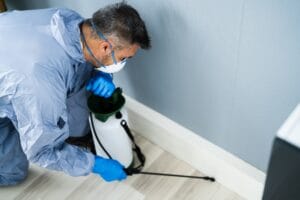
There comes a time when you might need to call in the pros. If you’re dealing with an active infestation or want to ensure your home is as protected as it can be, professional termite control services are your best bet.
Deciding Between DIY and Professional Help
DIY termite treatments can be tempting, but they often fall short of a complete solution. Professionals have access to more effective products and the expertise to apply them safely. If you’re unsure, it’s always safer to consult with a professional.
What to Expect from a Termite Professional
When you hire a termite professional, expect a thorough inspection of your property, a detailed treatment plan, and advice on preventing future infestations. They’ll likely use termiticides and baits that are more effective than over-the-counter options.
Stay Vigilant: Post-Treatment Best Practices

After treatment, don’t let your guard down. Ongoing vigilance is essential. Continue with regular inspections and upkeep to prevent termites from returning. Remember, termite protection is an ongoing process, not a one-time event.
Ongoing Inspections Are Key
Conduct regular inspections of your home, especially in areas where termites are likely to enter or have been previously active. Look for new signs of damage or mud tubes, and keep an eye out for swarms, especially during springtime.
Preventive Upkeep Measures to Continue
Continue with the landscaping and construction strategies mentioned earlier, and make sure to fix any new moisture problems right away. Stay in touch with your termite professional to keep up with the latest prevention techniques and treatments.
After your home has been treated for termites, the journey to maintain its integrity continues. It’s not just about what you do today, but how you uphold these measures over time. Let’s talk about what you need to keep doing to ensure those termites don’t come back.
Preventive Upkeep Measures to Continue
First and foremost, keep up with the landscaping work. It’s easy to let this slip, but remember, that wood-to-soil contact is like rolling out the red carpet for termites. Keep the perimeter of your home clear and maintain that buffer zone. Next, don’t let moisture accumulate near your foundation. Fix leaks promptly, clean your gutters, and make sure the soil slopes away from your house. And of course, keep checking for any signs of termites. Vigilance is your best defense.
Frequently Asked Questions (FAQ)
You’ve got questions, I’ve got answers. Here are some of the most common queries about termite protection that homeowners have.
How often should I inspect my home for termites?
At a minimum, inspect your home once a year. If you live in an area with a high termite risk or have had issues before, consider checking every six months. Spring is a particularly good time for an inspection since that’s when termites tend to swarm.
What are the first signs of a termite infestation?
Keep an eye out for mud tubes on exterior walls, hollow-sounding wood, and swarms of winged insects or discarded wings. These are your early warning signs that termites may be invading your space.
Are there any natural remedies to prevent termite infestations?
Indeed, there are. Borate sprays can be applied to wood surfaces as a deterrent, and beneficial nematodes can be introduced to your soil to target termite larvae. However, for full-scale protection, these methods should be part of a broader strategy.
Can I treat a termite infestation myself, and if so, how?
You can tackle a termite problem on your own with products like termiticides and bait stations, but be warned: DIY solutions may not reach the core of the colony. For extensive infestations, professional help is recommended to ensure the problem is thoroughly resolved.
What should I look for in a professional termite protection service?
Choose a service that offers a comprehensive inspection, a clear explanation of treatment options, and a solid guarantee. Look for licensed, experienced professionals with good reviews and a track record of success.
